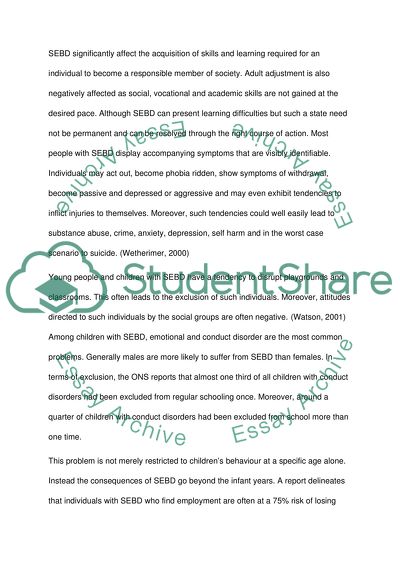Cite this document
(“What is SEBD and Disability Essay Example | Topics and Well Written Essays - 3000 words”, n.d.)
Retrieved from https://studentshare.org/education/1430307-including-children-with-sebd-and-disabilities-is-a
Retrieved from https://studentshare.org/education/1430307-including-children-with-sebd-and-disabilities-is-a
(What Is SEBD and Disability Essay Example | Topics and Well Written Essays - 3000 Words)
https://studentshare.org/education/1430307-including-children-with-sebd-and-disabilities-is-a.
https://studentshare.org/education/1430307-including-children-with-sebd-and-disabilities-is-a.
“What Is SEBD and Disability Essay Example | Topics and Well Written Essays - 3000 Words”, n.d. https://studentshare.org/education/1430307-including-children-with-sebd-and-disabilities-is-a.


